The year 2021 marks a double bicentennial: the beginning of the Greek War of Independence against the Ottoman Empire and the entry of the Venus de Milo into the national collections. On this occasion, the Musée du Louvre invites us on a journey between Paris and Athens with an exhibition that explores the cultural, historical, and artistic ties between France and Greece, from 1675 to 1919, which led to the definition of modern Greece and allowed us to understand the singular vocation of Greece in the constitution of the cultural identity of Europe. To be discovered until February 7, 2022.
Summary
The discovery of Greek art in France
The exhibition adopts a chronological approach and begins in 1675 when the Marquis de Nointel, ambassador of Louis XIV, goes to Constantinople. On his way, he passed through Athens and brought back antiquities that joined the royal collections and allowed the discovery of this art in France.

A century later, the Count of Choiseul Gouffier, ambassador of Louis XVI “to the Sublime Porte” – that is Constantinople – became one of the first philhellenes (friends of Greece) to defend its independence. He carried out the first excavations of the Acropolis and obtained on this occasion the authorization to make casts of the sculptures of the Parthenon but also to bring back some fragments which will be discovered in France for the first time. He also brought back from his trip an important book of observation, “Le Voyage pittoresque de la Grèce”.
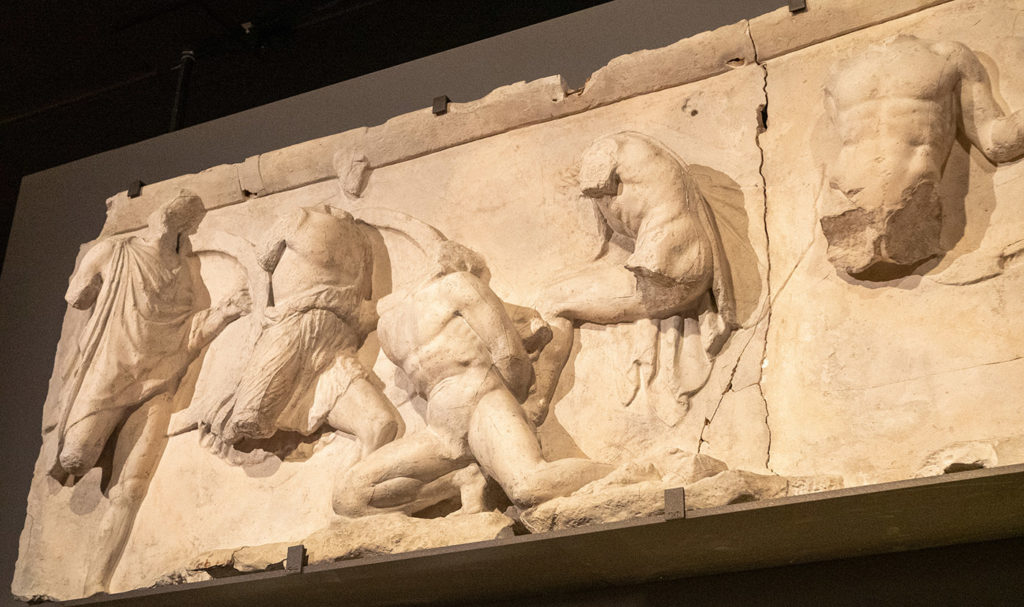
Without knowing it, these diplomats realized a first step in the birth of archaeology. They allow us to discover, through their testimony and the collections they brought back, the cultural diversity of Greece at that time.
The Greek War of Independence: a turning point in the knowledge of Greek culture
Since the beginning of the 14th century, the Greek territories have been part of the Ottoman Empire but everything changed in 1821 when the War of Independence broke out. This revolt was harshly repressed around 1826-27 by the Ottoman Empire which perpetrated several massacres against the Greek people, shocking public opinion throughout Europe. Many intellectuals and romantic artists such as Berlioz, Chateaubriand, Lord Byron, Delacroix or Victor Hugo showed their support through striking works, some of which were sold for the benefit of the Greek army.


Eugène Delacroix, Greece on the ruins of Missolonghi, Bordeaux Museum of Fine Arts, Bordeaux City Hall, photo F. Deval 
Pierre-Jean-David d’Angers, Young Greek woman at the tomb of Markos Botzaris, David d’Angers gallery, Angers
France, Germany and England also sent armies to support the Greek people, accompanied by scientific expeditions which allowed – among other things – the discovery of the Venus de Milo. The casts and engravings made from the works found will allow a wide dissemination of these discoveries throughout Europe.

Print of the statue of Aphrodite, known as Venus de Milo, Montpellier, Musée des Moulages 
Antiphanes de Paris, Hermès de Milo, Steetliche Museen de Berlin
The construction of Athens under the European prism
In 1829 Greece gained its independence and in 1834 Athens, which was then only a small town, became the capital of the young Greek state. It was then transformed into a modern capital taking up the neo-classical and neo-Byzantine vocabulary in order to build a modern Greek cultural identity, drawing from the ancient, Byzantine and Ottoman heritage of the young nation.
This cultural construction was carried out under the prism of the Europeans’ gaze, especially Germany: the three powers that had helped Greece had just named Otto I the country’s first monarch. The latter sent Greek artists to Munich for training, who, upon their return, would show the German influence in their creations. This is how many buildings in Athens have a German style but also how some costumes adopt a Bavarian look.

Costume of Maria Kountourioti, the wife of Dimitrios Voulgaris, Athens, Bénaki Museum 
Court costume designed by the first queen of Greece Amalia, having belonged to Kleopatra Karizopoulou, Athens, Bénaki Museum
The development of scientific archaeology
In 1837 the Greek State created an archaeological society in order to carry out excavations but also to regulate and even prevent the export of antiquities.
On its side, France creates in 1846 the French School of Athens which is the oldest French school in the world. The aim of this school was to promote the French-speaking world but it was quickly transformed into an archaeological institute which allowed France to participate in two large-scale excavations in Delos and Delphi. After the diplomatic archaeology and then the archaeology linked to military expeditions, a scientific archaeology developed with advanced and well-documented excavations thanks to the use of photographs, surveys and casts. Between 1870 and 1910, the knowledge of the ancient world was turned upside down.
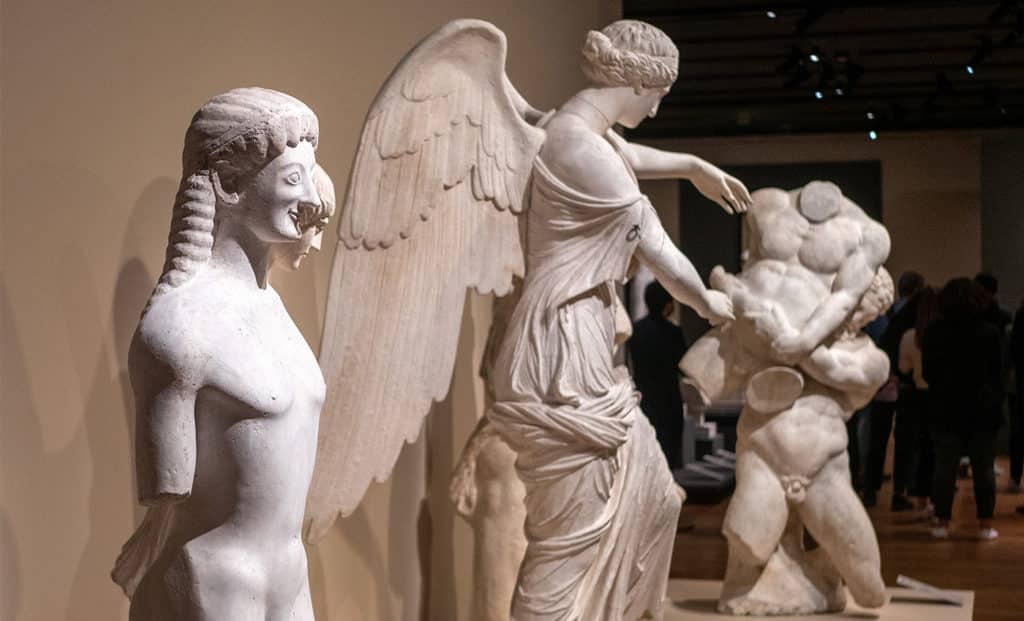
As a result of this archaeological research, France exhibited several casts of Greek sculptures at the 1900 World’s Fair and then at the Louvre, allowing the public to discover this distant art. This is how Rodin, Debussy and Isadora Duncan became passionate about Greek art and drew inspiration for some of their creations.
Did you know?
For a long time it was thought that Greek statues and monuments were white. A perception due to the discovery of white Roman copies and reinforced by the numerous plaster casts that spread this false idea of immaculate sculptures. In the 18th century, excavations revealed traces of polychromy which overturned this myth!
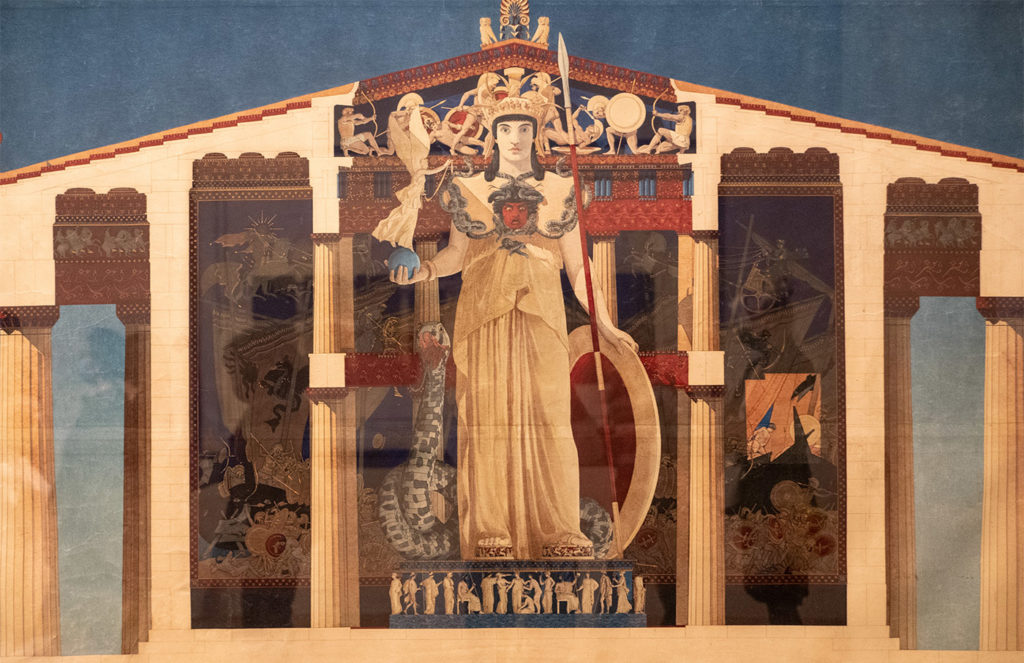
Towards a modern Greek art
In the second half of the 19th century, many Greek artists came to study in Paris which became the European artistic center. The Universal Exhibitions of 1878, 1889 and 1900 were an opportunity for these artists to present their work. If some are still inspired by ancient art, others like Iakovos Rizos show a strong modern inspiration.
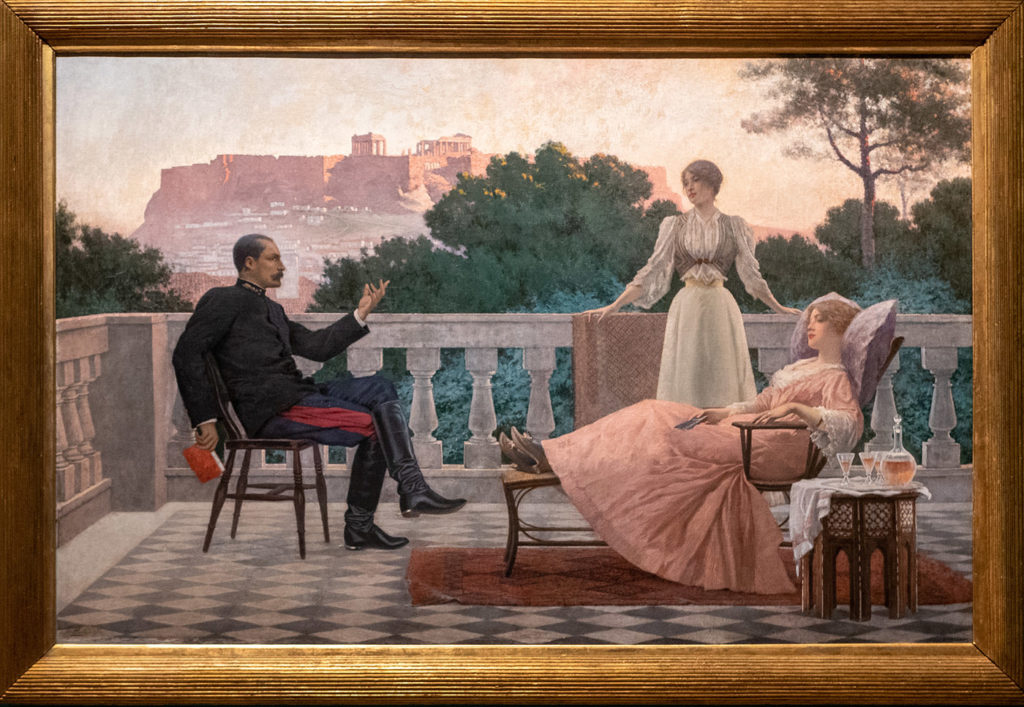
The exhibition ends in 1919, when a group of Greek artists called the Techni Group exhibits in Paris. These artists assume a renewal of the artistic production inspired by the European avant-garde.
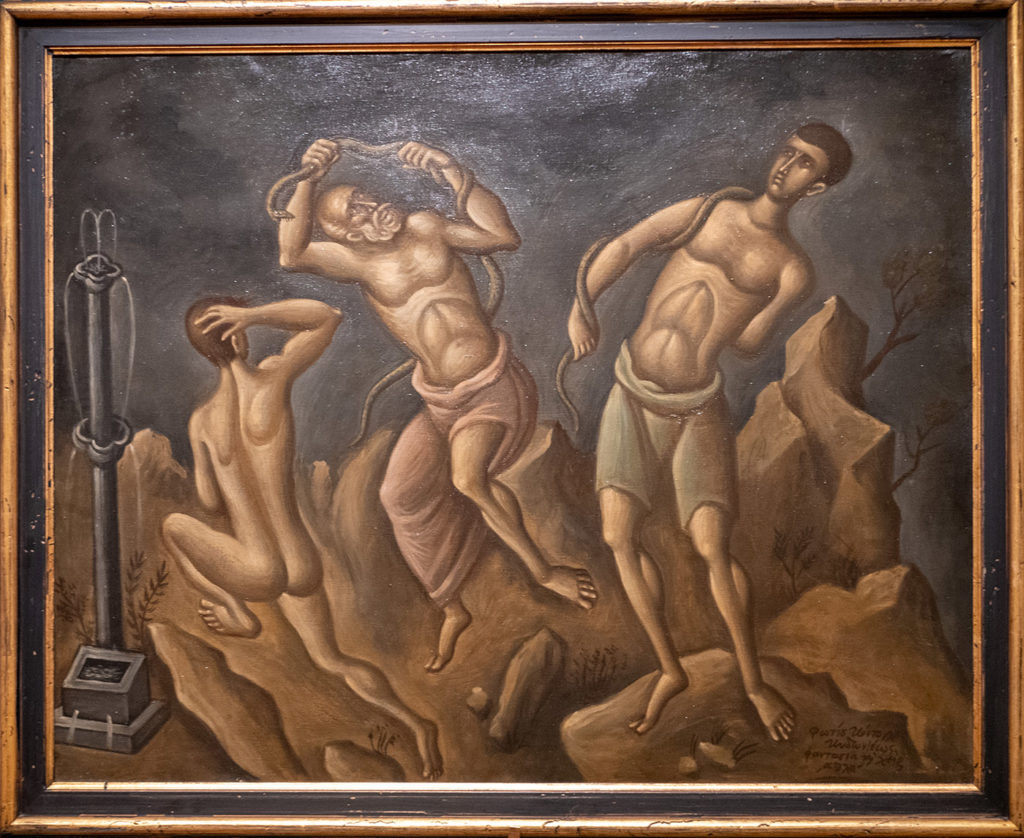
You have until February 7, 2022 to go to the Louvre to discover this dense but exciting exhibition where 360 works will take you through 250 years of artistic and cultural exchanges between France and Greece. Enjoy your visit!
Useful informations
Adress:
Musée du Louvre
Rue de Rivoli
75001 Paris (France)
Opening hours:
Until February 7, 2022
Every day except Tuesday
From 9am to 6pm
Website:
https://www.louvre.fr/en
Prices:
Online ticketing: € 17
On site (within the limits of available seats): € 15
Free for children under 26 years old
Article produced in collaboration with the Musée du Louvre

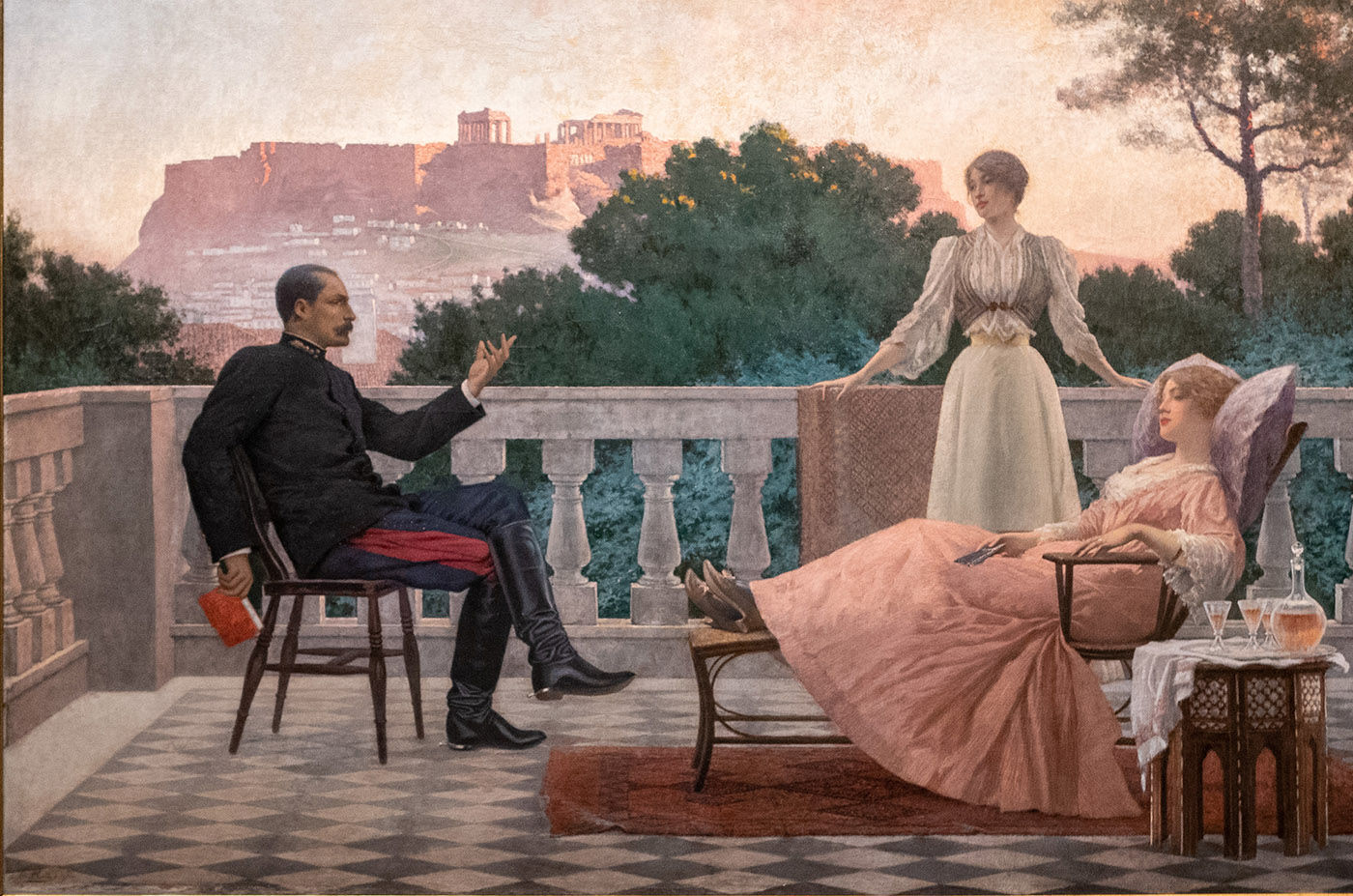


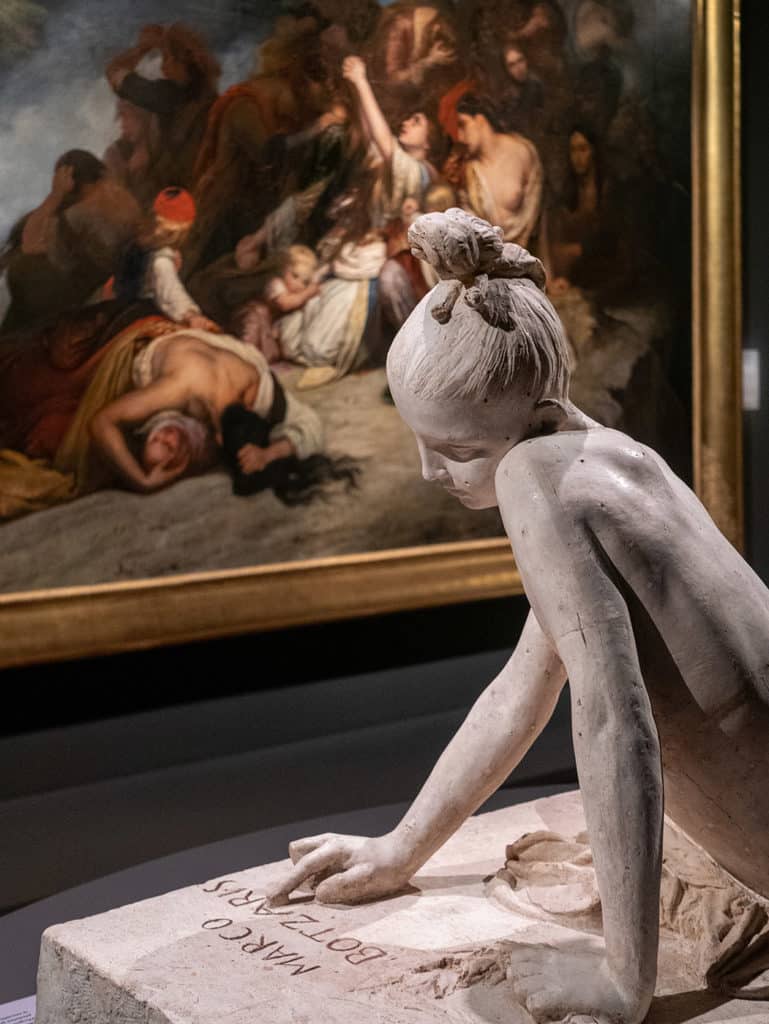

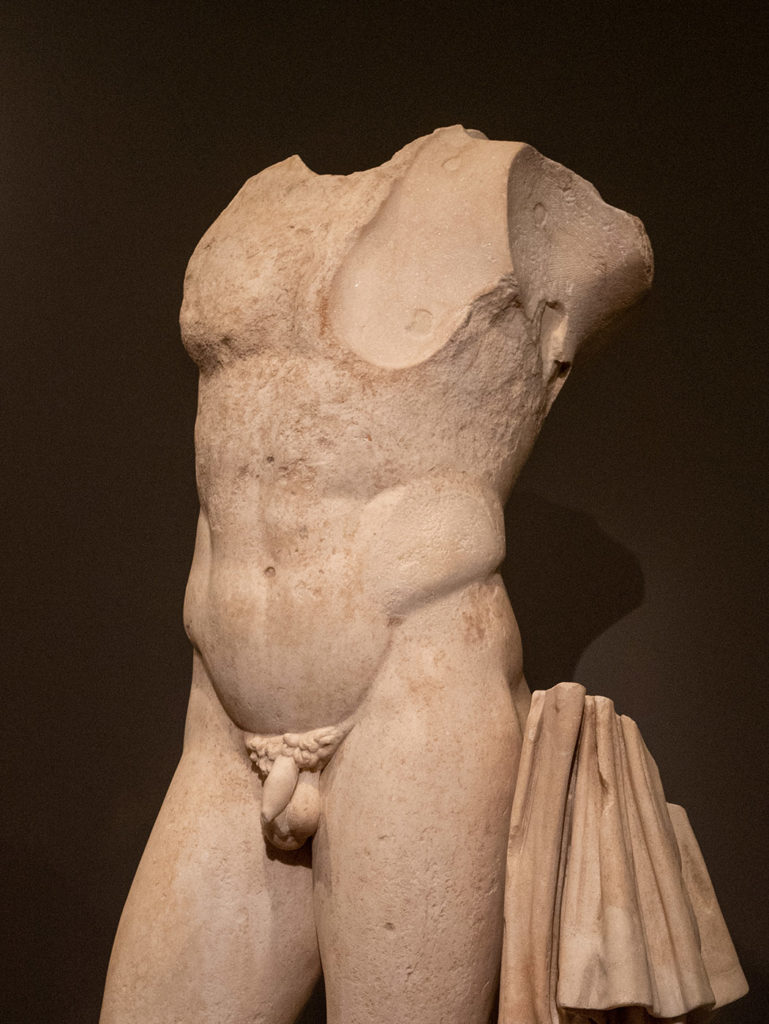
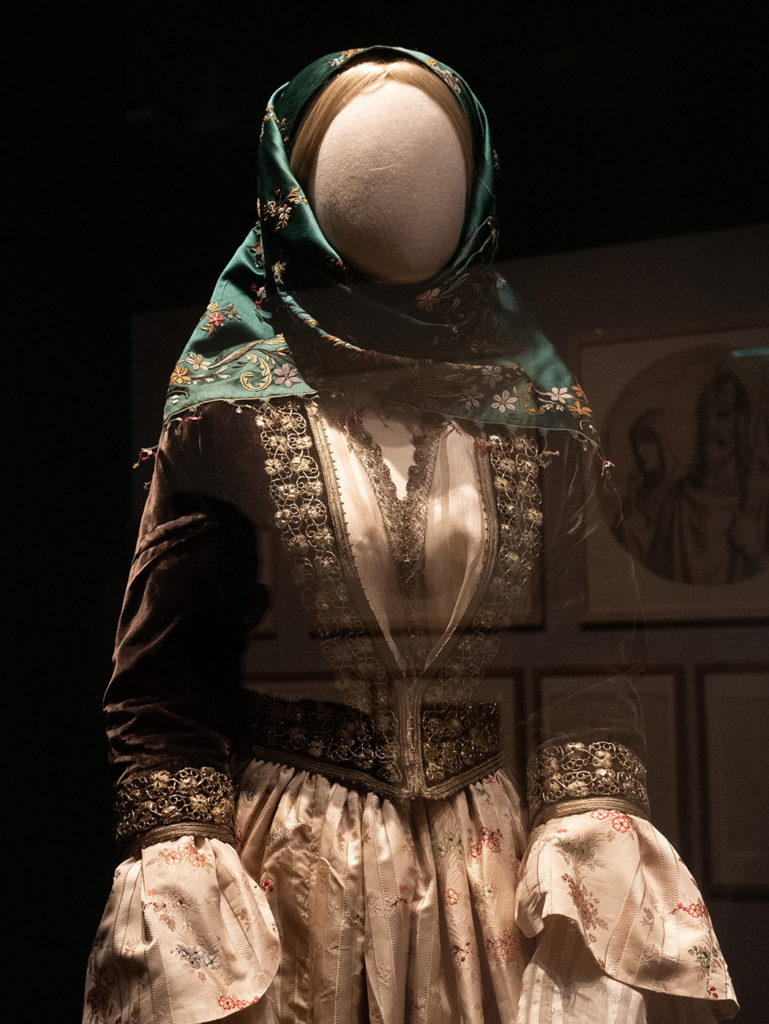
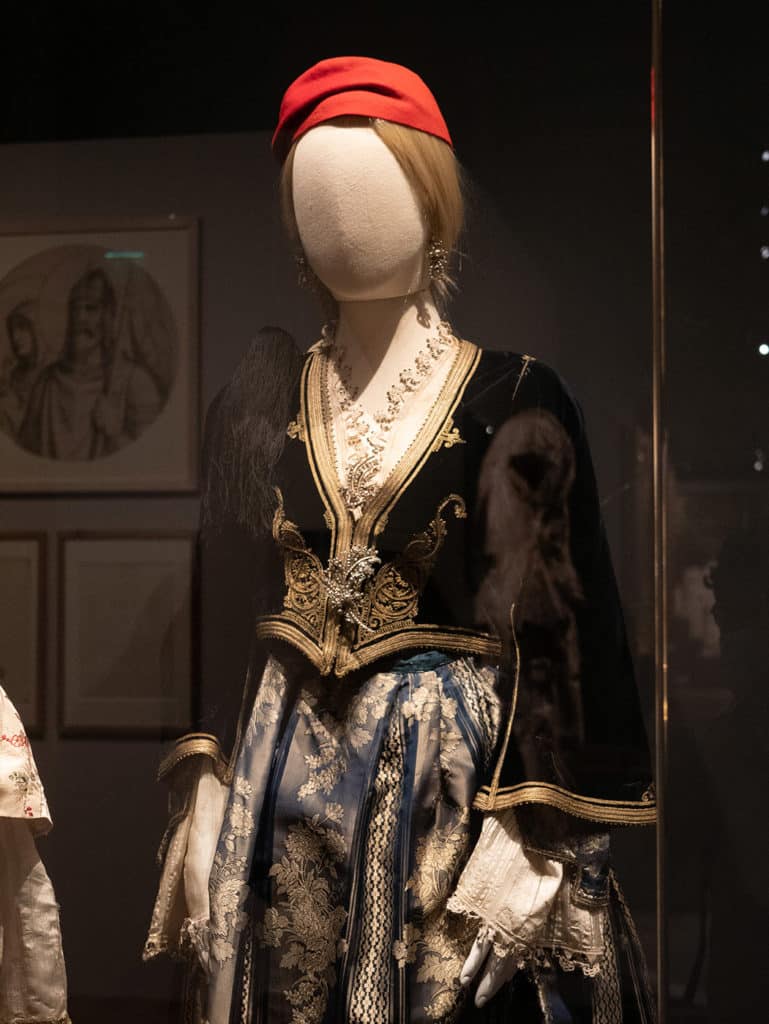


No Comments
Leave a comment Cancel